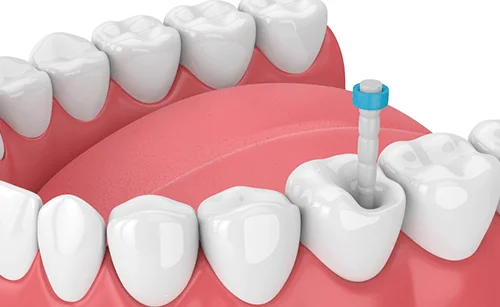
Root Canal Treatment, commonly known as RCT, is a dental procedure aimed at treating infections or damage to the pulp of a tooth. The pulp is the innermost layer of the tooth that contains nerves, blood vessels, and connective tissue. When the pulp becomes infected or inflamed due to deep decay, trauma, or other causes, RCT is performed to save the tooth from extraction and alleviate pain.
Symptoms that might indicate the need for a root canal treatment include:
These symptoms can indicate an infection or inflammation of the dental pulp, which may necessitate root canal treatment to alleviate pain and prevent further complications.
Root canal treatment typically involves the following steps:
Following root canal treatment, patients may experience some discomfort or sensitivity, which can usually be managed with over-the-counter pain relievers and should improve within a few days. It’s essential to follow the dentist’s instructions for post-treatment care and attend follow-up appointments for monitoring and any necessary adjustments to the restoration. Root canal treatment is highly successful in saving teeth and relieving pain, allowing patients to maintain their natural smiles and oral health.
© 2024. All Rights Reserved. Dr.K.Pal’s Diagnostic centre and dental clinic